Journey into the heart of the Atlas Mountains, a breathtaking tapestry of nature and culture. From their towering peaks to their verdant valleys, these mountains hold an allure that has captivated explorers, adventurers, and artists for centuries.
These majestic ranges not only define the geographical landscape of North Africa but also serve as a cradle of human civilization, with a rich tapestry of Berber traditions and a vibrant history that continues to shape the region.
Geographical Significance
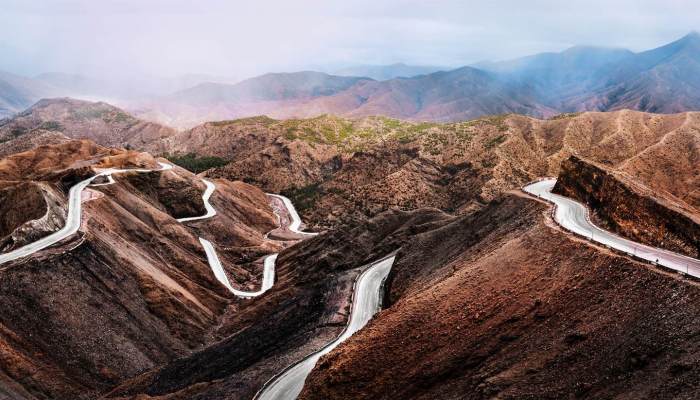
The Atlas Mountains are a prominent mountain range located in northwestern Africa, primarily spanning across Morocco, Algeria, and Tunisia. This extensive range extends for approximately 2,500 kilometers (1,553 miles) from the Atlantic Ocean in the west to the Gulf of Tunis in the east.
Geologically, the Atlas Mountains are a diverse region. The range comprises various geological formations, including sedimentary, metamorphic, and igneous rocks. The mountains are particularly rich in mineral resources, with significant deposits of iron ore, lead, zinc, copper, and manganese found throughout the region.
Geological Formations
- The Atlas Mountains are characterized by a complex geological history, resulting in a diverse range of geological formations. These formations include:
- Sedimentary rocks: These rocks, formed from the accumulation and consolidation of sediments over time, are prevalent in the northern and western parts of the Atlas Mountains.
- Metamorphic rocks: These rocks have undergone significant changes in their mineral composition and texture due to intense heat and pressure. They are commonly found in the central and eastern regions of the Atlas Mountains.
- Igneous rocks: Formed from the cooling and solidification of molten rock, igneous rocks are found throughout the Atlas Mountains, particularly in the High Atlas region.
Natural Resources
- The Atlas Mountains are rich in mineral resources, which have been exploited for centuries. Significant deposits of iron ore, lead, zinc, copper, and manganese are found throughout the region.
- In addition to minerals, the Atlas Mountains also possess valuable water resources. The mountains are home to numerous rivers and lakes, which provide water for irrigation, drinking, and hydropower generation.
- The natural resources of the Atlas Mountains have played a crucial role in the economic development of the surrounding regions.
Historical and Cultural Importance
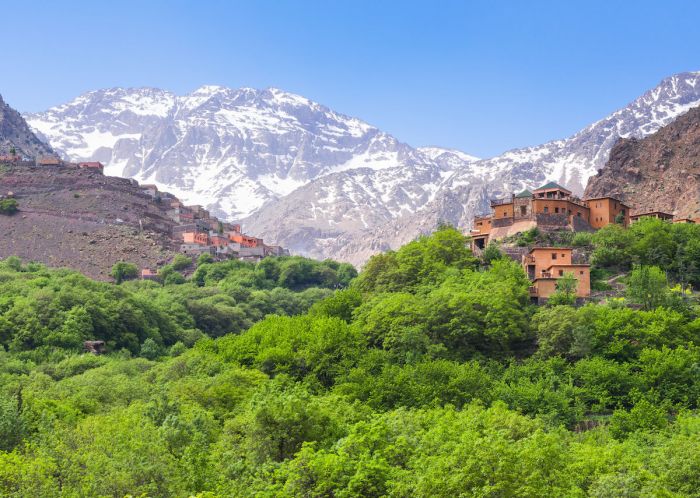
The Atlas Mountains have played a significant role in the history and culture of North Africa. The mountains have been a barrier and a bridge, shaping the movement of people and ideas throughout the region.
The Atlas Mountains were home to the Berbers, a diverse group of indigenous people who have inhabited the region for centuries. The Berbers have a rich culture and tradition, and they have played a key role in the history of the Atlas Mountains.
Key Historical Events, Atlas mountains
- The Atlas Mountains were the site of the Battle of Ksar el Kebir in 1578, which marked the end of the Saadi dynasty in Morocco.
- The mountains were also a refuge for Berber tribes during the French colonial period.
- In the 20th century, the Atlas Mountains were the site of the Algerian War of Independence.
Berber Culture and Traditions
The Berber people of the Atlas Mountains have a rich culture and tradition. They are known for their traditional music, dance, and crafts. The Berbers also have a strong sense of community and family.
- The Berbers are known for their traditional music, which is often played on instruments such as the lute, the tambourine, and the flute.
- Berber dance is also an important part of their culture. Berber dances are often performed at weddings and other celebrations.
- The Berbers are also skilled craftspeople. They are known for their pottery, weaving, and jewelry making.
Flora and Fauna

The Atlas Mountains boast an incredibly diverse array of plant and animal species, showcasing the rich biodiversity of the region. The unique microclimates and altitudinal gradients found within the mountain range have fostered the evolution of a wide variety of flora and fauna, many of which are endemic to the region.
Plant Life
The Atlas Mountains are home to over 4,500 plant species, including many rare and endangered species. The diverse habitats, ranging from lush forests to arid steppes, support a wide variety of plant communities. The Mediterranean climate and the influence of the Atlantic Ocean have contributed to the establishment of unique and endemic species such as the Atlas cedar, the Moroccan fir, and the Algerian iris.
Animal Life
The Atlas Mountains are also home to a diverse array of animal species, including mammals, birds, reptiles, and amphibians. The mountain range provides habitats for large predators such as the Barbary lion, the African leopard, and the striped hyena. Other notable species include the Barbary macaque, the Atlas mountain viper, and the endangered Saharan cheetah.
The unique adaptations of these species have allowed them to thrive in the challenging conditions of the Atlas Mountains. For example, the Barbary lion has developed a thick mane to protect itself from the cold, while the Atlas mountain viper has evolved a potent venom to subdue its prey.
The flora and fauna of the Atlas Mountains play a vital role in the ecosystem, providing food, shelter, and other resources for a wide range of species. The conservation of these species is essential for maintaining the biodiversity and ecological integrity of the region.
Tourism and Recreation
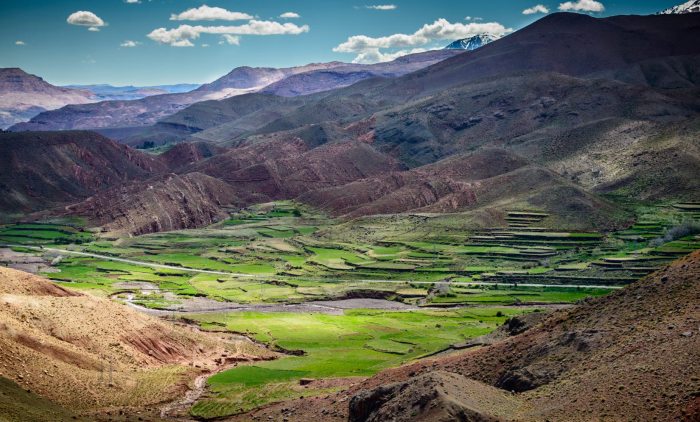
The Atlas Mountains offer a wide range of recreational opportunities, catering to adventure enthusiasts, nature lovers, and cultural explorers alike.
The majestic Atlas Mountains, stretching across Morocco, Algeria, and Tunisia, offer breathtaking views and diverse landscapes. Their rugged peaks and verdant valleys have inspired travelers and adventurers alike. From the bustling streets of Antwerp , the allure of the Atlas Mountains beckons, promising an escape into nature’s grandeur.
Amidst the towering peaks, Berber villages nestle harmoniously, showcasing the rich cultural heritage of the region. As the sun sets, casting a warm glow upon the mountains, the Atlas Mountains transform into a canvas of colors, creating an unforgettable spectacle.
One of the most popular activities is hiking. The mountains’ diverse terrain provides trails for all levels of hikers, from leisurely walks to challenging ascents. Along the way, hikers can admire stunning scenery, including waterfalls, gorges, and panoramic views.
The Atlas Mountains offer a diverse range of hiking trails for adventure enthusiasts. While exploring these stunning peaks, you might find yourself craving a change of scenery. For those seeking exceptional hiking experiences beyond the Atlas Mountains, consider venturing into the United States.
From the iconic trails of the Grand Canyon to the breathtaking paths of Yosemite National Park, discover the best hiking trails in the US and immerse yourself in the captivating beauty of America’s natural wonders.
Skiing
During the winter months, the Atlas Mountains offer excellent skiing opportunities. The Oukaïmeden ski resort is the most popular, with slopes suitable for both beginners and experienced skiers. The resort also offers a range of other winter activities, such as snowshoeing and cross-country skiing.
Cultural Tours
The Atlas Mountains are home to a rich cultural heritage. Visitors can explore ancient Berber villages, learn about traditional crafts, and experience the local hospitality. There are also opportunities to visit historical sites, such as the ruins of the Roman city of Volubilis.
It is important to practice sustainable tourism when visiting the Atlas Mountains. This includes respecting the local culture and environment, and choosing tour operators who are committed to preserving the natural and cultural heritage of the mountains.
Economic Impact

The Atlas Mountains serve as a significant economic engine for the region, contributing to the livelihoods of millions of people.
The mountains offer a diverse range of economic opportunities, including agriculture, mining, and tourism.
Agriculture
The fertile valleys and terraced slopes of the Atlas Mountains support a thriving agricultural industry.
- The region is renowned for its production of olives, citrus fruits, almonds, and vegetables.
- Animal husbandry, particularly sheep and goat herding, is also practiced.
Mining
The Atlas Mountains hold rich mineral deposits, including copper, lead, zinc, and iron ore.
- Mining activities provide employment opportunities and contribute to the local economy.
- However, mining can also pose environmental challenges, requiring responsible management practices.
Tourism
The Atlas Mountains’ scenic beauty and cultural heritage attract a growing number of tourists.
- Tourism provides income through accommodation, food services, and guided tours.
- Sustainable tourism practices are crucial to preserve the natural and cultural integrity of the region.
Challenges and Opportunities for Sustainable Economic Development
While the Atlas Mountains offer significant economic potential, sustainable development is essential to ensure long-term prosperity.
- Preserving the environment and protecting natural resources are crucial for maintaining agricultural productivity and tourism.
- Investing in infrastructure and education can improve the quality of life for local communities and support economic growth.
- Encouraging responsible tourism practices and promoting cultural heritage can foster sustainable development.
Environmental Conservation: Atlas Mountains
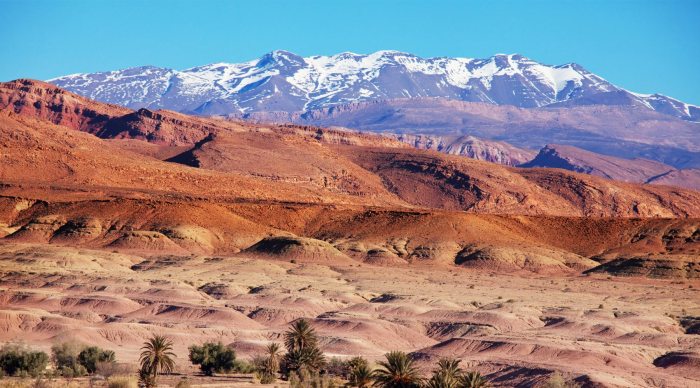
The Atlas Mountains face several environmental threats, including climate change, deforestation, and pollution. Climate change is leading to changes in precipitation patterns, which is affecting the water resources of the mountains. Deforestation is occurring due to logging and agricultural expansion, which is leading to soil erosion and loss of biodiversity. Pollution from industrial activities and urban areas is also a threat to the environment of the mountains.
Conservation Efforts
There are a number of conservation efforts and initiatives aimed at protecting the ecological integrity of the Atlas Mountains. These include the establishment of protected areas, reforestation projects, and pollution control measures. The Moroccan government has established several national parks and reserves in the Atlas Mountains, including the Toubkal National Park and the Ifrane National Park. These parks help to protect the natural habitats of the mountains and provide opportunities for recreation and tourism.
The majestic Atlas Mountains, stretching across North Africa, offer breathtaking vistas. For a change of pace, consider a detour to the pristine shores of Ambergris Caye , a Belizean paradise known for its crystal-clear waters and vibrant marine life. As you return to the rugged landscapes of the Atlas Mountains, you’ll appreciate the contrast between the tranquil beauty of the coast and the awe-inspiring grandeur of these ancient peaks.
Reforestation projects are also being carried out in the Atlas Mountains to help restore lost forests. These projects involve planting trees and shrubs to help prevent soil erosion and improve water quality. Pollution control measures are also being implemented to reduce the impact of industrial and urban pollution on the environment of the mountains.
Art and Literature
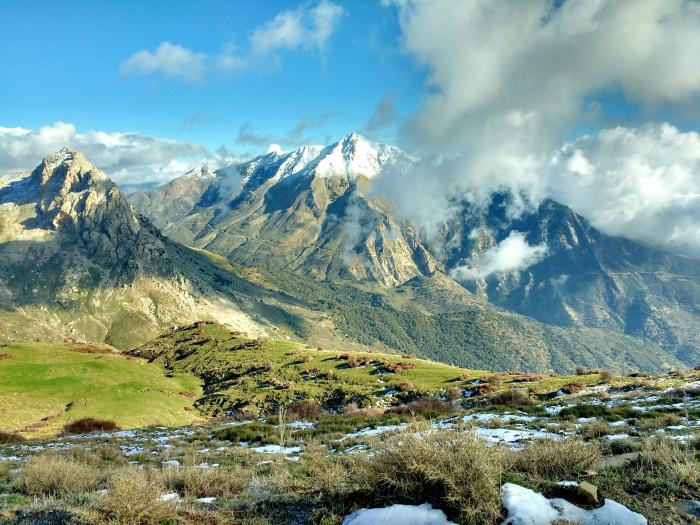
The Atlas Mountains have been a source of inspiration for artists, writers, and musicians throughout history. The region’s rugged beauty, diverse cultures, and rich history have provided ample material for creative expression.
From the ancient cave paintings of Tassili n’Ajjer to the contemporary works of Moroccan artist Hassan Hajjaj, the Atlas Mountains have left an indelible mark on the world of art. The mountains have also been the setting for countless stories, poems, and songs, including the epic poem “The Iliad” by Homer and the novel “The Sheltering Sky” by Paul Bowles.
Cultural Significance
These creative expressions have played a vital role in shaping the cultural identity of the region. They have helped to preserve the traditions and customs of the Berber people, who have inhabited the Atlas Mountains for centuries. They have also fostered a sense of pride and belonging among the people of the region.
Summary

As we conclude our exploration of the Atlas Mountains, let us remember the delicate balance between preserving their natural wonders and fostering sustainable development. By embracing eco-friendly practices and cherishing the cultural heritage of the region, we can ensure that these mountains continue to inspire and enchant generations to come.
Common Queries
Where are the Atlas Mountains located?
The Atlas Mountains stretch across North Africa, spanning Morocco, Algeria, and Tunisia.
What is the highest peak in the Atlas Mountains?
Mount Toubkal, located in Morocco, is the highest peak in the Atlas Mountains, reaching an elevation of 4,167 meters (13,665 feet).
What is the significance of the Atlas Mountains in Berber culture?
The Atlas Mountains have been home to the Berber people for centuries and hold great cultural and spiritual significance. The mountains provide sustenance, shelter, and a deep connection to their ancestral heritage.